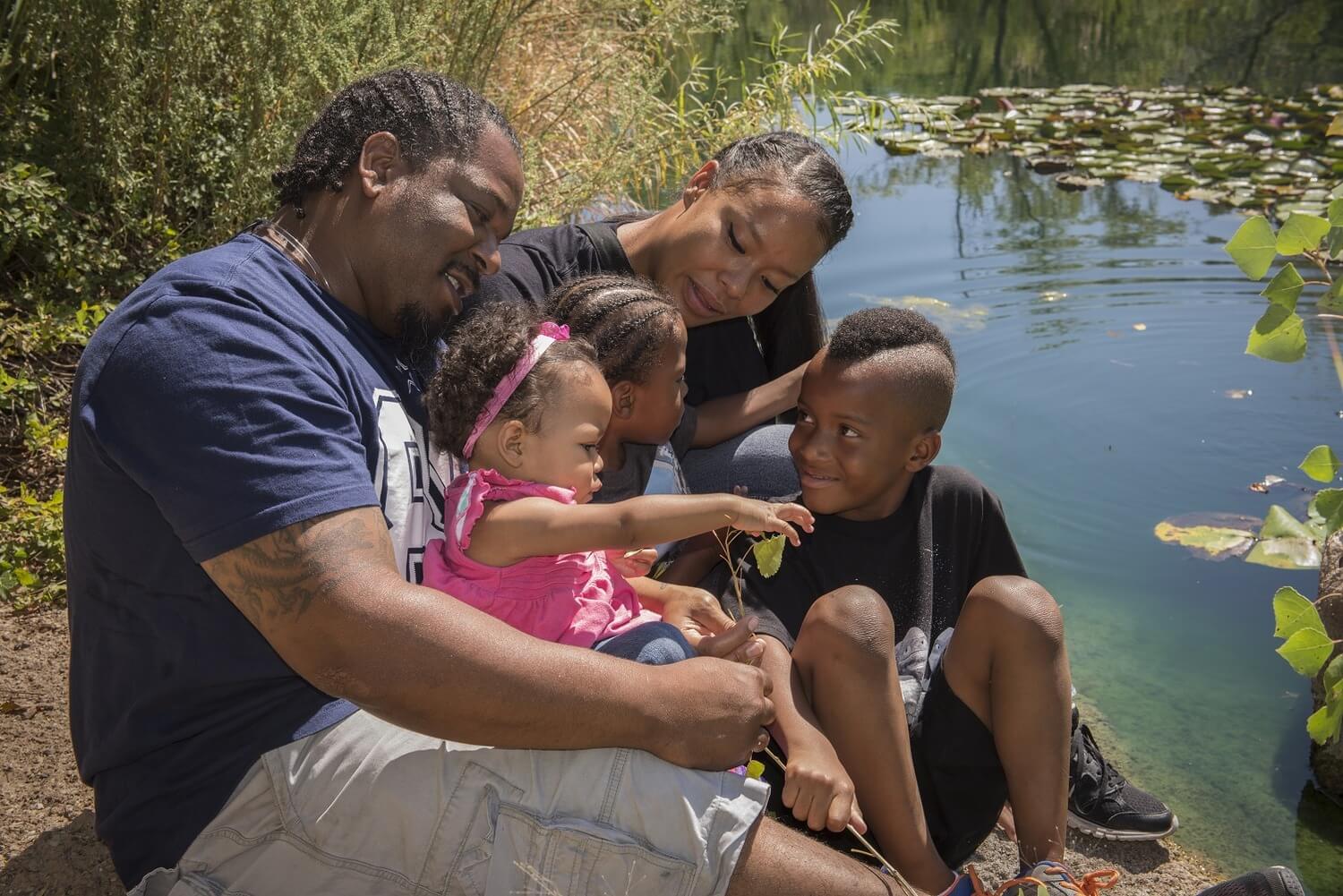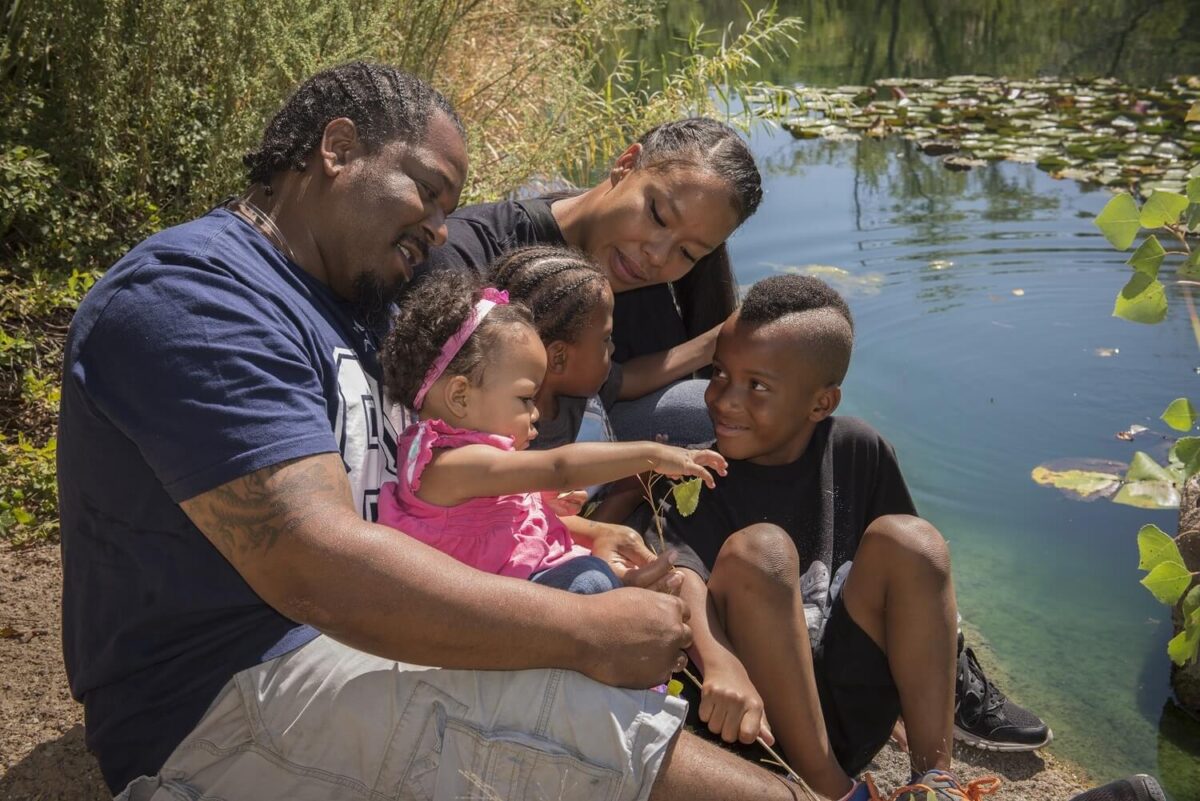
Autism Supports Work Best When They Start in Early Childhood. What Signs Should You Look For?
All young children grow and develop differently. One child may be cautious and quiet, while another makes a run for it every time you set them down. Differences like these are an expected part of the early years. Sometimes, though, young children may need extra help to reach their developmental milestones and get on track to reach their full potential. This is particularly true for children showing signs of autism, which affects about 1 in every 36 children in the United States.
So, just what is autism and what signs should families look for in young children? We asked some experts to talk us through it. Renee Garcia and Sylvia Sarmiento are both speech and language pathologists who diagnose autism at the University of New Mexico Center for Development & Disability. They offered some insights into what autism is, how to spot it, and the value of getting services early.
What is Autism?
Autism is a difference in how people behave and experience the world. It can look extremely different across individuals, which is why it’s formally called Autism Spectrum Disorder (ASD). People with ASD are sometimes referred to as being “on the spectrum,” meaning that their autism experience is located on a wide spectrum, or range, of possible traits and experiences.
“It’s a spectrum, because it’s going to look different for everyone,” Renee said. “There’s a saying that says, if you’ve met one person with autism, you’ve met one person with autism.”
But there are some patterns. Generally, people with autism have differences around their social development, and they show behaviors that are repetitive or restrictive, meaning that they are less open to changes and limit themselves to a certain set of experiences.
But if you’ve ever met a toddler, you know they love repetition. Of all the wonderful books you’ve collected for them to enjoy, it’s a very toddler move to decide they just want to read Chicka Chicka Boom Boom on an endless loop. So, what’s an early sign of autism, and what is typical early childhood development? To jump straight to a list of early signs, click here.
Repetitive Behaviors
When they are diagnosing autism in young children, Renee and Sylvia look for differences in two areas: restricted, repetitive behaviors, and social communication and interaction. Let’s start with repetitive behaviors. How do they distinguish between autism and young children’s love of enjoying the same stories and experiences over and over (and over)? Sylvia said it’s important to look at the big picture.
“How about other areas of the day?” she asked. “What are they doing with other play activities throughout the day? When you’re doing Play-Doh, are they letting you make a pizza and then the next day you guys are going to make cake?”
A child with autism may be very rigid about doing only the exact same set of activities with the Play-Doh, or playing with their toys in very specific, repetitive ways. They also may be inflexible about meal times, eating only a few foods and insisting on a specific plate or cup. Again, it’s not unusual for a toddler or young child to have strong feelings about what they eat or how they eat it. But signs of autism are about consistent patterns across different parts of your day.
Social Communication and Interaction
Children with autism often have differences in how they communicate and interact with the people around them. There might seem to be a mismatch between their sounds, gestures, and eye contact. So, they might make very little eye contact, or might make eye contact that seems out of sync with their speech or gestures. A child with autism might not respond to their name, and might not smile or engage in back-and-forth interactions with their caregivers. This is different from shyness when meeting new people. A shy child may feel uncomfortable in a social situation, but understands cues and can communicate effectively if they need to. For a child with autism, reading social cues like facial expressions and body language is harder, and may get in the way of communication.
Social differences can be less obvious in girls with autism, Renee said, so you might have to look more closely. Girls with autism are more likely to be able to read social cues and play appropriately, but may still be inflexible or repetitive in how they play. “We’re getting better at identifying girls, because they do present with a little bit more of those social skills,” Renee said.
Language and Culture
Spotting early signs of autism may look different for children in different families and cultures. For example, limiting eye contact with elders is considered respectful in some Native American cultures, and can be inaccurately perceived as an autism sign. Differences in language development can also be a sign of autism, but may be harder to accurately spot in young children who are learning multiple languages. Children learning two languages may sometimes experience a “silent period” when they are absorbing and listening to a new language but not yet speaking it. This can be mistaken for an autism sign, so it’s important to make sure that anyone who is evaluating or diagnosing your child understands your family context. If they don’t ask, you can speak up and tell them. Your instincts as a caregiver are important here, because you know best whether your child’s development and behavior is typical for your family and community.
Act Early
If you think your child is showing signs of autism, there’s no reason to wait. New Mexico has lots of FREE services for young children and their families that can support your child’s healthy development. Acting early is important, because support services do the most good when children are very young. For example, if a child is very inflexible about their routines and behaviors, it’s easier to introduce change in the early years, before those behaviors have hardened over years of repetition.
“We want to get in there as quickly as we can,” Sylvia said. “We know that if we can start working with that intervention, that those patterns in the brain start to rewire. And it’s easier to work earlier than when you have very established, rigid behaviors down the line.”
FIT and Child Find
If your child is under age 3, you can get a developmental evaluation through the Family Infant Toddler (FIT) program. A team of experts can help you evaluate whether services are needed, and to make an individualized plan to support your goals for your child’s development. These services are provided at times and places that work for you, and can include referrals to providers specializing in autism. If your child has turned 3 but not yet entered kindergarten, they can qualify for services through Child Find. Child Find is run through your local school district, and can connect you with services like inclusion PreK services or therapists who support speech and physical development. Whether you go through FIT or Child Find, services are always FREE!
You should know that there are two different types of autism diagnoses: educational and medical. FIT and Child Find are part of the special education system, and can help you get referred for an educational diagnosis. This can help ensure your child qualifies for educational supports in the early years and after they enter the K-12 system. A medical diagnosis, which is what Renee and Sylvia do, can help your child get referred for other kinds of services and therapies. You may find that you need both. Start the process toward an educational diagnosis with FIT or Child Find, and start toward a medical diagnosis by talking with your pediatrician about your concerns.
You’re the Driver
Whatever services you decide to pursue, families are always in charge of their child’s services and plan. You know your child best, and any service they receive will be designed with your input, to help your child progress toward goals that are important to you.
“As providers, we try to be as good as we can about really supporting the families in what their goals and priorities are individually, for their child, for their family, for their culture,” Renee said. “They are the drivers, and we’re the helpers.”

Box: Ready to Learn More?
Check out our related episode of The Early Show with Alax, where Alax interviews Sydney the Occupational Therapist about autism (and plays with bubbles!).

